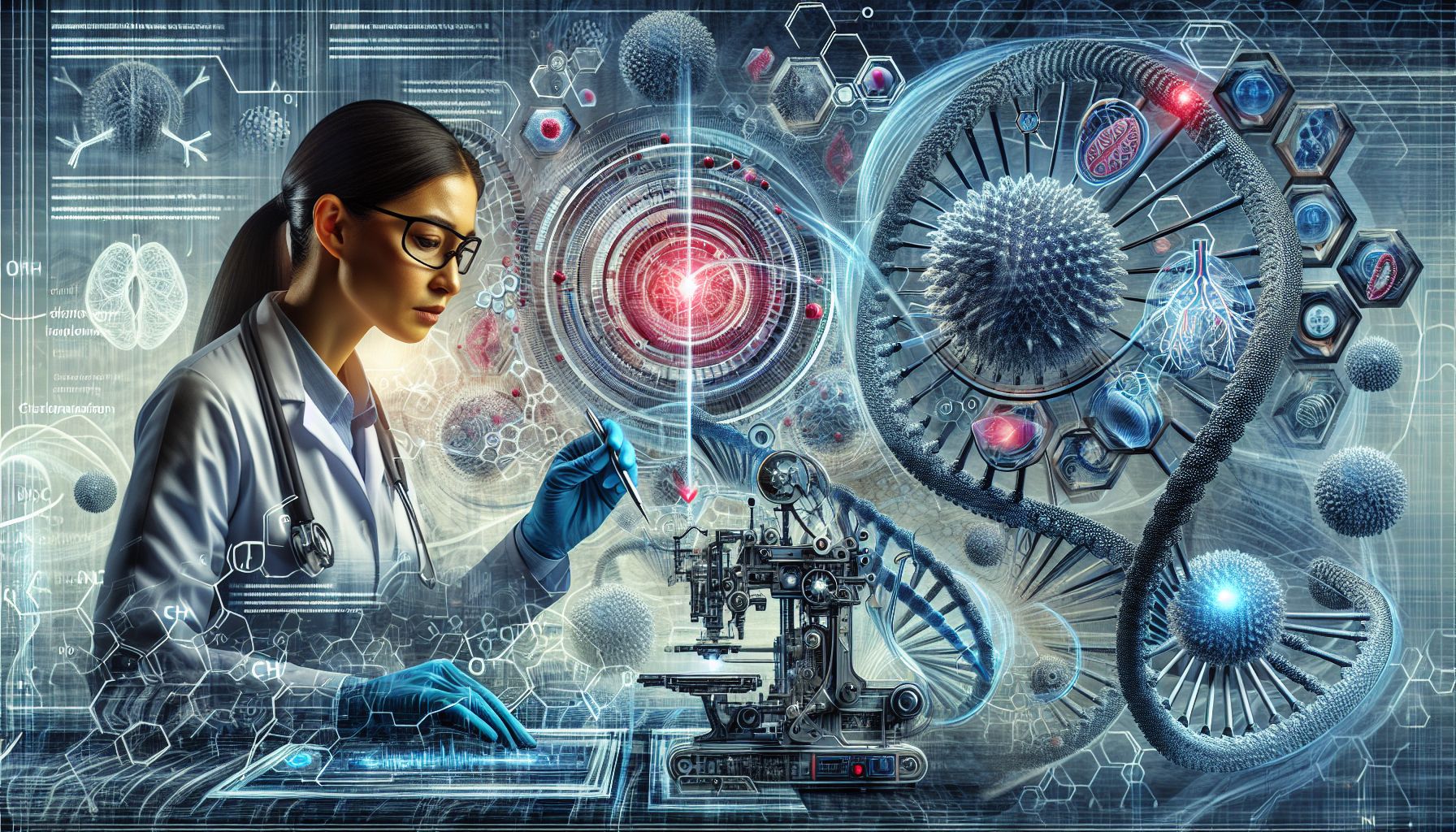📌 Let’s explore the topic in depth and see what insights we can uncover.
⚡ “Imagine a world where technology can predict a heart attack before it happens, or where prosthetics are controlled by brain signals. Welcome to the realm of Biomedical Engineering!”
Imagine a world where surgeons can practice complex procedures on a patient’s digital twin before the real surgery, where prosthetic limbs respond to neural signals for a natural feel, and where nanorobots can deliver drugs directly to the diseased cells in the body. Welcome to the world of biomedical engineering! This multidisciplinary field combines engineering principles with medical and biological sciences to design and create equipment, devices, computer systems, and software used in healthcare. In this post, we will explore the exciting world of biomedical engineering, highlighting its role in healthcare innovation, and the potential it holds for the future. Whether you’re a tech enthusiast, a healthcare professional, or simply curious about how technology and health intersect, this post will provide a comprehensive overview of the fascinating field of biomedical engineering.
🎯 The Science Behind Biomedical Engineering

Revolutionizing Healthcare through Biomedical Engineering Innovations
At its core, biomedical engineering is about solving problems related to human health using the principles of engineering and biology. 📌 In fact, where the analytical skills of engineers meet the life-saving potential of medical science. Biomedical engineers use their knowledge of biology, medicine, and engineering to design solutions for health-related issues. They work on a wide range of technologies, from designing new medical devices like pacemakers and artificial organs, to developing advanced imaging techniques for diagnosing diseases, to creating sophisticated software to analyze complex biological data. To truly appreciate the impact of this field, let’s take a closer look at some specific areas where biomedical engineering is making a significant difference.
💡 Innovations in Medical Devices and Prosthetics
Biomedical engineering has brought about numerous transformative innovations in medical devices and prosthetics.
Artificial Organs
Through the use of synthetic materials and innovative design, biomedical engineers have developed artificial organs such as heart, kidneys, and lungs. These devices can temporarily perform the functions of the organ while the patient waits for a transplant, or even permanently replace the organ in some cases.
Prosthetics
Biomedical engineers are revolutionizing the field of prosthetics, designing limbs that can mimic the natural movement of the human body. By integrating sensors that respond to neural signals, these prosthetics can provide a greater range of motion and a more natural feel for the user.
Medical Devices
From designing advanced imaging equipment like MRI machines, to creating smaller, more efficient devices like insulin pumps, biomedical engineers play a critical role in the development of medical devices that improve patient care.
🧬 Biotechnology and Genetic Engineering
Biomedical engineering is also making significant strides in the field of biotechnology and genetic engineering.
Gene Therapy
Biomedical engineers are at the forefront of developing gene therapy techniques. These techniques involve altering a person’s genes to prevent or treat disease. This revolutionary approach could potentially cure a variety of genetic disorders and chronic diseases.
Tissue Engineering
This involves creating artificial organs or tissues in the lab that can be used to replace or restore damaged tissues in the body. This has huge potential in organ transplantation, reducing the reliance on donor organs and the risk of rejection.
Micro and Nanotechnology
Biomedical engineers are leveraging micro and nanotechnology to develop targeted drug delivery systems. These systems can deliver drugs directly to the diseased cells in the body, increasing the effectiveness of treatment while reducing side effects.
🖥️ Health Informatics and AI in Healthcare
The role of biomedical engineering is not confined to purely physical devices or biological techniques. It also extends into the digital realm, where it is shaping the future of healthcare through health informatics and artificial intelligence (AI).
Health Informatics
Biomedical engineers are using their expertise to develop sophisticated software and systems to manage and analyze health data. This can assist healthcare professionals in making more informed decisions, improving patient care and outcomes.
Artificial Intelligence (AI)
AI is making a significant impact on healthcare, and biomedical engineers are at the heart of this revolution. 🧩 As for They, they’re developing AI algorithms that can analyze medical images, predict disease progression, and even assist in surgical procedures.
🧭 Conclusion
As we stand on the brink of a new era in healthcare, biomedical engineering is at the forefront, driving the technological advancements that are transforming health and medicine. From designing life-saving devices and artificial organs to pioneering gene therapy and AI in healthcare, biomedical engineers are truly the unsung heroes of the medical world. Biomedical engineering is the exciting intersection of health and technology innovation, a dynamic field where every day brings new challenges and the potential for groundbreaking discoveries. 📌 In fact, a testament to human ingenuity and the relentless pursuit of better health for all. Whether you’re considering a career in this field or simply curious about the future of healthcare, one thing is clear: biomedical engineering is not just about creating technology for the sake of technology. It’s about leveraging that technology to solve real-world health problems and improve the quality of life for people around the world. In the end, it’s about making a difference. And that’s what makes it truly exciting.
🤖 Stay tuned as we decode the future of innovation!
